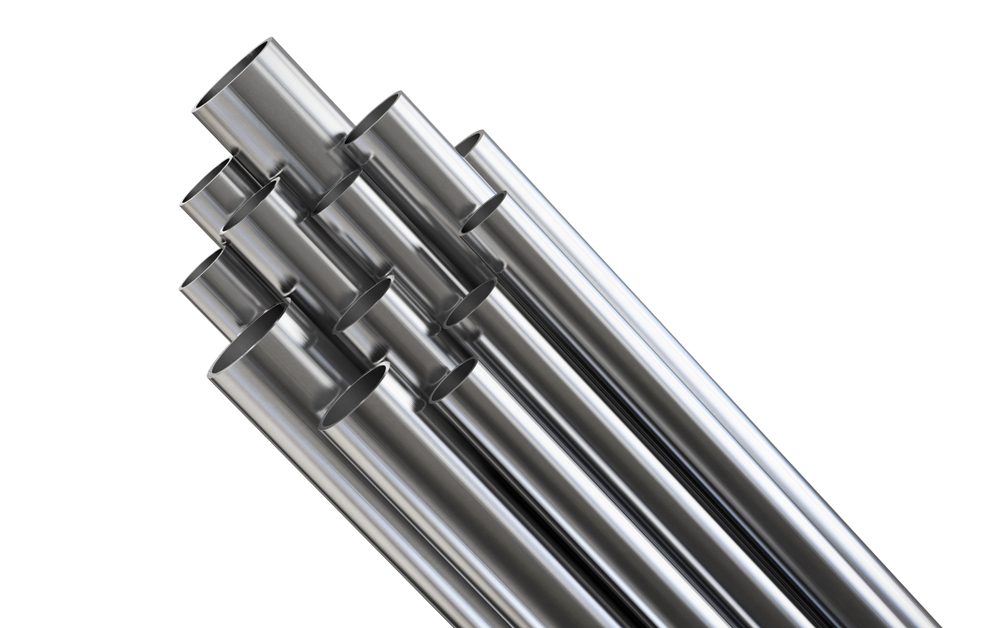
Seamless Versus Welded Tubing; Which is Best for Your Application
When selecting hydraulic tubing for your application, the choice between seamless and welded tubing can significantly impact the performance, reliability, and cost-effectiveness of your system. Both types of tubing have their unique advantages and applications, and understanding these differences is crucial for making an informed decision. In this blog post, we will explore the key characteristics of seamless hydraulic tubing and welded hydraulic tubing, their respective advantages and disadvantages, and how to determine which is best suited for your specific needs.
What is Seamless Hydraulic Tubing?
Overview
Seamless hydraulic tubing is manufactured without any welds or joints, making it a continuous, smooth tube from end to end. This type of tubing is created through a process where a solid metal billet is heated and then formed into a hollow tube. The lack of welds in seamless tubing eliminates potential weak points, providing a uniform structure throughout the entire length.
Manufacturing Process
The production of seamless hydraulic tubing involves several steps:
- Heating: A solid metal billet is heated to a high temperature.
- Piercing: The heated billet is pierced to create a hollow core.
- Extruding: The hollow billet is then elongated and shaped into a tube through extrusion.
- Sizing: The tube is further processed to achieve the desired dimensions and wall thickness.
Advantages of Seamless Tubing
- Uniform Strength: The absence of welds means that seamless tubing has consistent strength and reliability throughout its length.
- Higher Pressure Ratings: Seamless tubing can handle higher pressures compared to welded tubing, making it suitable for high-pressure applications.
- Improved Corrosion Resistance: The continuous metal structure is less prone to corrosion and leaks.
- Better Performance: Seamless tubes are less likely to have defects, providing more reliable performance in demanding conditions.
Disadvantages of Seamless Tubing
- Higher Cost: The manufacturing process for seamless tubing is more complex and costly, making it more expensive than welded tubing.
- Limited Sizes: Seamless tubing may have limited size options and might not be available in all diameters and wall thicknesses.
What is Welded Hydraulic Tubing?
Overview
Welded hydraulic tubing is created by welding together metal strips or plates to form a tube. The weld joins the edges of the metal strips, creating a seam along the length of the tube. This type of tubing is generally produced from coiled metal sheets that are formed into a tube shape and then welded.
Manufacturing Process
The production of welded hydraulic tubing involves:
- Forming: Metal strips are rolled and formed into a tubular shape.
- Welding: The edges of the formed metal strip are welded together to create a continuous tube.
- Heat Treatment: The welded tube may undergo heat treatment to relieve stresses and improve its mechanical properties.
- Sizing: The tube is then sized and finished to the required specifications.
Advantages of Welded Tubing
- Lower Cost: The manufacturing process for welded tubing is generally less expensive, leading to lower costs for the final product.
- Versatility: Welded tubing can be produced in a wide range of sizes and thicknesses, making it versatile for various applications.
- Availability: It is often more readily available in different dimensions compared to seamless tubing.
Disadvantages of Welded Tubing
- Potential Weak Points: The weld seam can be a weak point, potentially leading to reduced strength and pressure rating.
- Lower Pressure Ratings: Welded tubing generally has lower pressure ratings compared to seamless tubing, which may limit its use in high-pressure applications.
- Corrosion Concerns: Weld seams may be more susceptible to corrosion and may require additional protection.
Comparing Seamless and Welded Hydraulic Tubing
Strength and Durability
Seamless hydraulic tubing is typically stronger and more durable due to its uniform structure and lack of welds. It is preferred for high-pressure applications where reliability is critical. Welded tubing, while generally less strong, can still be suitable for many applications where pressure requirements are lower.
Cost Considerations
Welded tubing is more cost-effective due to its simpler manufacturing process, making it a popular choice for applications where budget constraints are a factor. Seamless tubing, though more expensive, offers superior performance and reliability, which can justify the higher cost in demanding situations.
Applications
- Seamless Tubing: Ideal for high-pressure systems, aerospace, automotive, and critical hydraulic applications where maximum strength and reliability are required.
- Welded Tubing: Suitable for general-purpose hydraulic systems, construction, and lower-pressure applications where cost and availability are more critical considerations.
Making the Right Choice for Your Application
When choosing between seamless and welded hydraulic tubing, consider the following factors:
- Pressure Requirements: For high-pressure applications, seamless tubing is often the better choice due to its higher pressure rating.
- Cost Constraints: If budget is a primary concern and the application does not involve extreme pressure, welded tubing may be more suitable.
- Corrosion and Durability: Evaluate the environmental conditions and potential for corrosion. Seamless tubing generally offers better corrosion resistance.
- Availability: Consider the availability of the tubing in the required sizes and specifications. Welded tubing may offer more options.
Conclusion
Both seamless and welded hydraulic tubing have their own set of advantages and are suited to different applications. Seamless hydraulic tubing excels in high-pressure and high-strength applications due to its uniformity and lack of welds. On the other hand, welded hydraulic tubing offers a cost-effective solution for general-purpose use and a wider range of sizes.
Understanding the specific requirements of your application, including pressure, cost, and environmental factors, will help you make the best choice between seamless and welded tubing. By carefully evaluating these factors, you can ensure that your hydraulic system performs optimally and meets your performance and reliability needs.
Royal Brass Incorporated
Welcome Royal Brass Incorporated! We are your 3rd generation, family-owned, local hose supplier! Our family has dedicated our services to supplying northern California with all types of hoses, fittings, flanges, regulators, valves, adapters, and gauges. We pride ourselves on having the most extensive inventory in northern California. Our inventory ensures that we can fix most products on site, the same day. Here at Royal Brass Incorporated, we only hire qualified individuals who are trained in factory sales. Our fully stocked warehouses ensure that we can fill your hydraulic and pneumatic hose, tubing, and fitting needs on time, every time. High-quality customer service is our goal and has been since 1952. Stop by or contact us today!
Categorised in: Tubes





